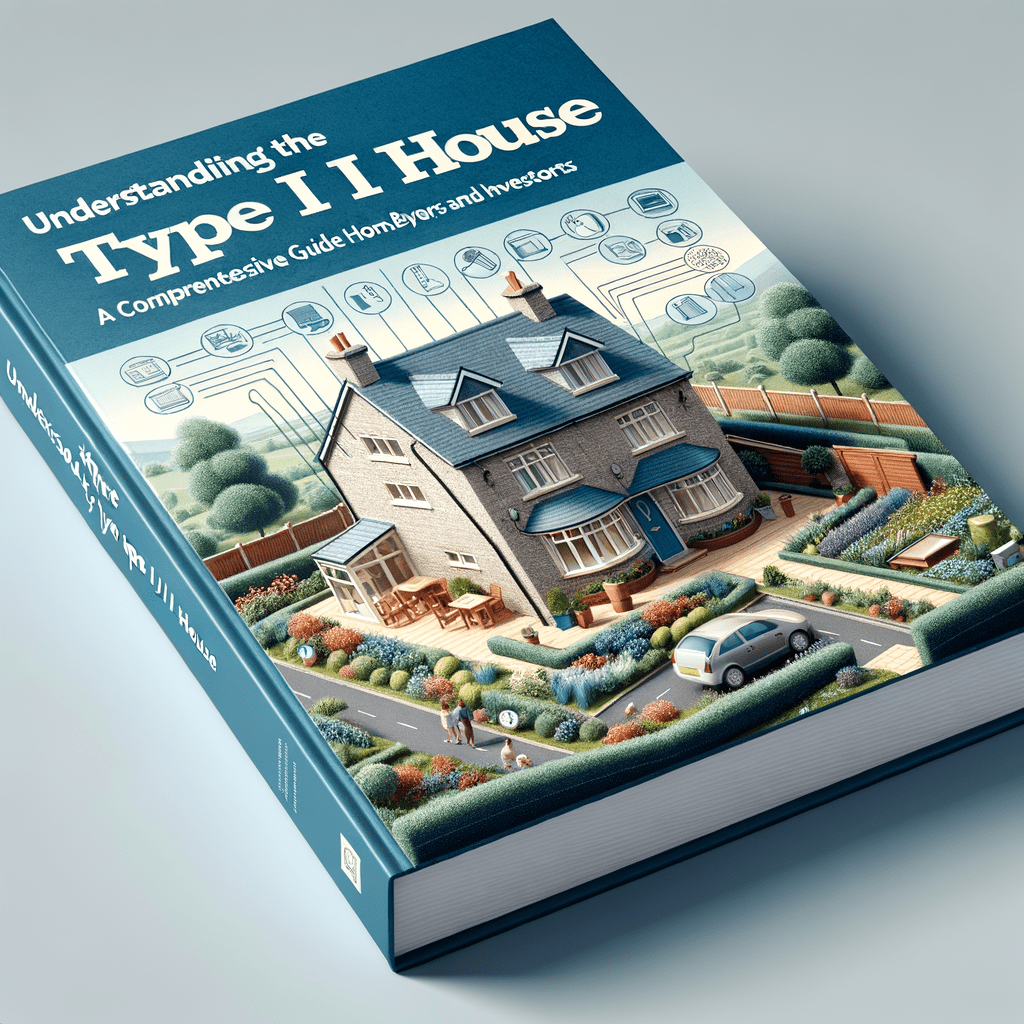Understanding the Universal Type II House: A Comprehensive Guide for UK Home Buyers and Investors
The Universal Type II House: A Historical Overview
The Universal Type II house, a notable example of post-war British architecture, emerged in the 1940s as a response to the urgent housing needs following World War II. These homes were primarily constructed as part of the government’s initiative to provide quick and affordable housing solutions. The design and construction of these houses were heavily influenced by the need for rapid assembly and cost-effectiveness, leading to the adoption of system-built methods.
Manufacturers and Designers
The Universal Type II houses were manufactured by various companies that specialized in prefabricated housing solutions. These manufacturers were tasked with producing homes that could be quickly assembled on-site, using pre-fabricated components. The designers of these homes focused on creating a standardised model that could be replicated across different locations, ensuring uniformity and efficiency in construction.
Typical Locations and Distribution
These houses were predominantly built in urban and suburban areas across the UK, where the demand for housing was most acute. The exact number of Universal Type II houses constructed is not well-documented, but they were a common sight in many post-war housing estates. Their presence is still notable in certain areas, serving as a reminder of the country’s architectural and social history.
Characteristics of the Universal Type II House
The Universal Type II house is typically a two-storey semi-detached property, easily identifiable by its distinctive mansard roof covered with tiles. The external walls of these houses were constructed using asbestos cement sheets or brick, depending on the availability of materials and the specific requirements of the site. This construction method was chosen for its speed and efficiency, allowing for rapid assembly and minimal on-site labour.
Potential Hazards and Risks
One of the primary concerns with Universal Type II houses is the use of asbestos cement sheets in their construction. Asbestos, a material once praised for its fire-resistant properties, is now known to pose significant health risks if disturbed. Homeowners and potential buyers should be aware of the presence of asbestos and take necessary precautions during renovations or repairs.
Defective Premises Act Considerations
The Universal Type II house is not specifically classified as defective under the Defective Premises Act. However, the presence of asbestos and potential structural issues due to the age of these properties may warrant further investigation. It is advisable for buyers to conduct a thorough survey to identify any defects or areas of concern before purchasing.
Inspecting a Universal Type II House: A Guide for Surveyors
When inspecting a Universal Type II house, surveyors should pay close attention to several key areas. The steel frame, which forms the main structural component of these houses, should be assessed for signs of corrosion or damage. The protective coating, if present, should be evaluated for effectiveness in preventing rust and deterioration.
Construction Details
-
Roof: The mansard roof, typically covered with tiles, should be inspected for any signs of wear or damage. The roof’s structure should be assessed to ensure it remains sound and capable of withstanding weather conditions.
-
Walls: The external walls, made of asbestos cement sheets or brick, should be checked for cracks, bulging, or other signs of structural issues. Any asbestos-containing materials should be handled with care and assessed for potential risks.
-
Floors: The ground and first floors should be examined for stability and any signs of subsidence or movement. The materials used in the flooring should be identified to determine their condition and longevity.
-
Main Frame: The steel frame is a critical component of the Universal Type II house. Surveyors should look for any signs of rust, corrosion, or damage that could compromise the structural integrity of the property.
Common Defects in Universal Type II Houses
Over time, Universal Type II houses may develop several common defects. These can include:
-
Corrosion of Steel Frame: The steel frame, if not adequately protected, can suffer from corrosion, leading to structural weaknesses.
-
Asbestos-Related Issues: Asbestos cement sheets, if damaged or disturbed, can pose health risks. Proper management and removal by professionals are essential.
-
Roofing Problems: The mansard roof may experience tile slippage or damage, requiring regular maintenance to prevent leaks and water ingress.
-
Wall Cracks: Cracks in the external walls, whether brick or asbestos cement, can indicate underlying structural issues that need addressing.
Maintenance and Improvement Tips
Maintaining a Universal Type II house requires regular inspections and proactive measures to address potential issues. Here are some tips for homeowners and investors:
-
Regular Inspections: Conduct regular inspections of the steel frame, roof, and walls to identify any signs of wear or damage early.
-
Asbestos Management: If asbestos is present, ensure it is managed safely and professionally. Avoid disturbing asbestos-containing materials during renovations.
-
Roof Maintenance: Keep the roof in good condition by replacing damaged tiles and ensuring proper drainage to prevent water damage.
-
Structural Repairs: Address any structural issues promptly to prevent further deterioration and maintain the property’s value.
Conclusion
The Universal Type II house, with its unique design and historical significance, remains an important part of the UK’s architectural landscape. While these homes offer a glimpse into the past, they also present certain challenges and risks that require careful consideration. By understanding the characteristics, potential hazards, and maintenance needs of these properties, home buyers and investors can make informed decisions and ensure the longevity and safety of their investment.
At Flettons, we’re committed to safeguarding your investment. When considering a property purchase, trust our seasoned expertise to reveal any hidden threats. For a thorough building survey, get your instant quote through our quote calculator or reach out directly at 0203 691 0451. Your home’s safety is our top priority.

